István Benedek (1915–1996), a writer, doctor, psychiatrist and grandson of the storyteller Elek Benedek, is a special character in Hungarian literature and public life. His best-known work, Aranyketrec (Eng. The Gilded Cage, trans. Károly Ravasz) was published in 1957, but many family bookshelves contain several other of his works. Benedek lived with his family in the valuable old villa building between Vércse Street and Vas Gereben Street on the side of Sas Hill from 1957, the year The Gilded Cage was published.
The year was an adventurous one. Following the 1956 revolution, Benedek was an untrusted figure and was sent to an internment camp, his book already in press at the time and published later. On being freed internment in Kistarcsa, he bought the house using income from the book together with his father Marcel Benedek and his psychiatric patient Gábor Karinthy, a peculiar and tragic figure Hungarian literary figure (and the son of the much-loved writes Frigyes Karinthy).
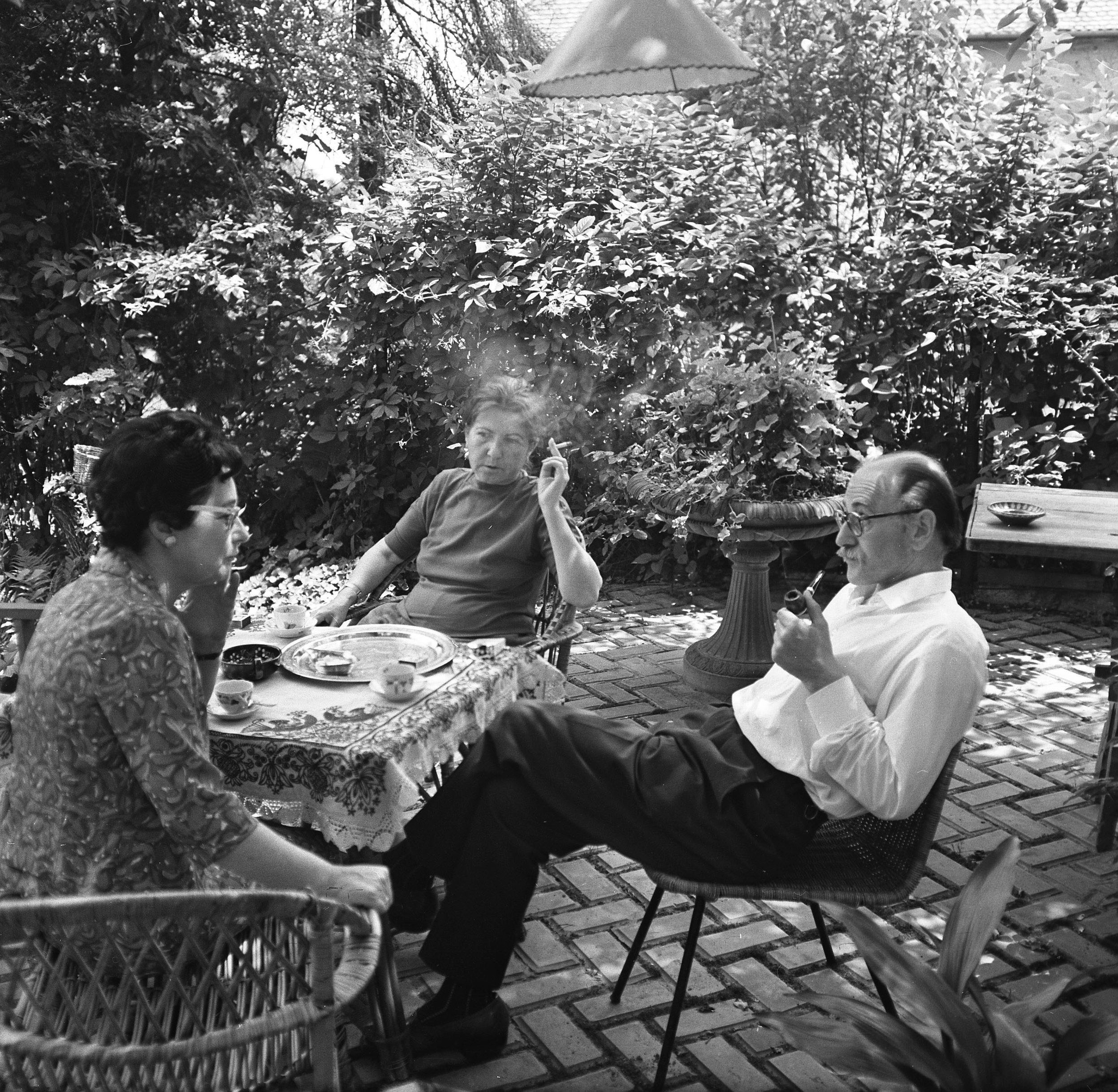
István Benedek in the garden of his house in 1965 (Photo: Fortepan/No.: 173559)
István Benedek was friendly with the Karinthy family, and spoke about the history of the house to Gábor's brother, Ferenc Karinthy, in an interview in the 9th issue of Kortárs magazine in 1977:
"– This house here on Vércse Street on Sas hill is beautiful, especially the garden. You once showed me a memorial plaque here in the back garden, who was it who had the house built?
– The plaque is dedicated to a certain Kati, who I found out was the wife of the famous bookbinder Gottermayer.
– Gottermayer? I think I know the name.
– He was the most famous bookbinder in Pest at the turn of the century. He bound the Pallas Lexicon, the one-hundred volumes of the complete Jókai, and the decorated issues of Elek Benedek's stories you so like to read.
– That is, the representative works of the time?
– This was the weekend house of Nándor Gottermayer. His wife's name, Kati, can be seen on the plaque from 1894.
– Have the foundations of this house been standing since then, over eighty years?
– At the time it had a three-acre garden with an orchard and horses. Vércse Road did not even exist. Later the garden became smaller, and the house bigger. The weekend house became a family home. Naturally, its owners have changed, your brother, my father and I bought it in 1957. I still live here; they have passed away since then.
– Do you tend the garden yourself?
– My wife and I tend to everything ourselves, not just the garden."
The history of the house was continued the following year by István Benedek himself. Those who know his work are aware of the writer's great versatility. However, he had never held a chisel before 1978. Despite this, he decided to carve a traditional Székely gate. He detailed the background of his decision in his book Szirt a habok közt ('Cliffs above the foam').
The beautiful wrought-iron gates of the house, which had been commissioned by Nádor Gottermayer were stolen just before the villa was bought in 1957. While the villa is often referred to under its address on Vércse Road, this entrance is up-hill and opens onto Vas Gereben Street. The family replaced the gate with an impromptu DIY solution.
This lasted for over two decades, but by the end of the 1970s was beginning to rot. The two male members of the family István Benedek and his brother in law discussed their options and decided to build a new gate.
"I studied the relevant literature, including Malonyay's [The art of the Hungarian People] second volume on the folk art of Székely Land. Despite never having held a chisel, I decided that if our Székely forefathers had been able to carve and erect these gates, it could not be so difficult that we could not do so ourselves."
The family had honoured its Székely roots for as long as it could, and returned to Kisbacon (present-day Bățanii Mici, Romania) often.
The writer received advice and some wood from a carpenter who lived nearby and bought tools and chisels. No noble wood was available; only pine could be used for the gate. This may have been a blessing in disguise, as working with hardwood is a much more difficult task.
"If one aims for a more modest pattern, and finds the technique, leaves, flowers and letters are easy to carve into pine" – writes Benedek. Of course, their plans were not overly ambitious: "There are two types of Székely gates: the large and small. On the large ones a hay cart can pass under the roof, the smaller ones are only for people. As we don't have a hay cart, we chose the latter."
Small Székely gates consist of three beams: two side posts which are left slightly thicker at the bottom – the two are connected by a ridge-board. The three beams are joined with a practical yet aesthetic knee braces.
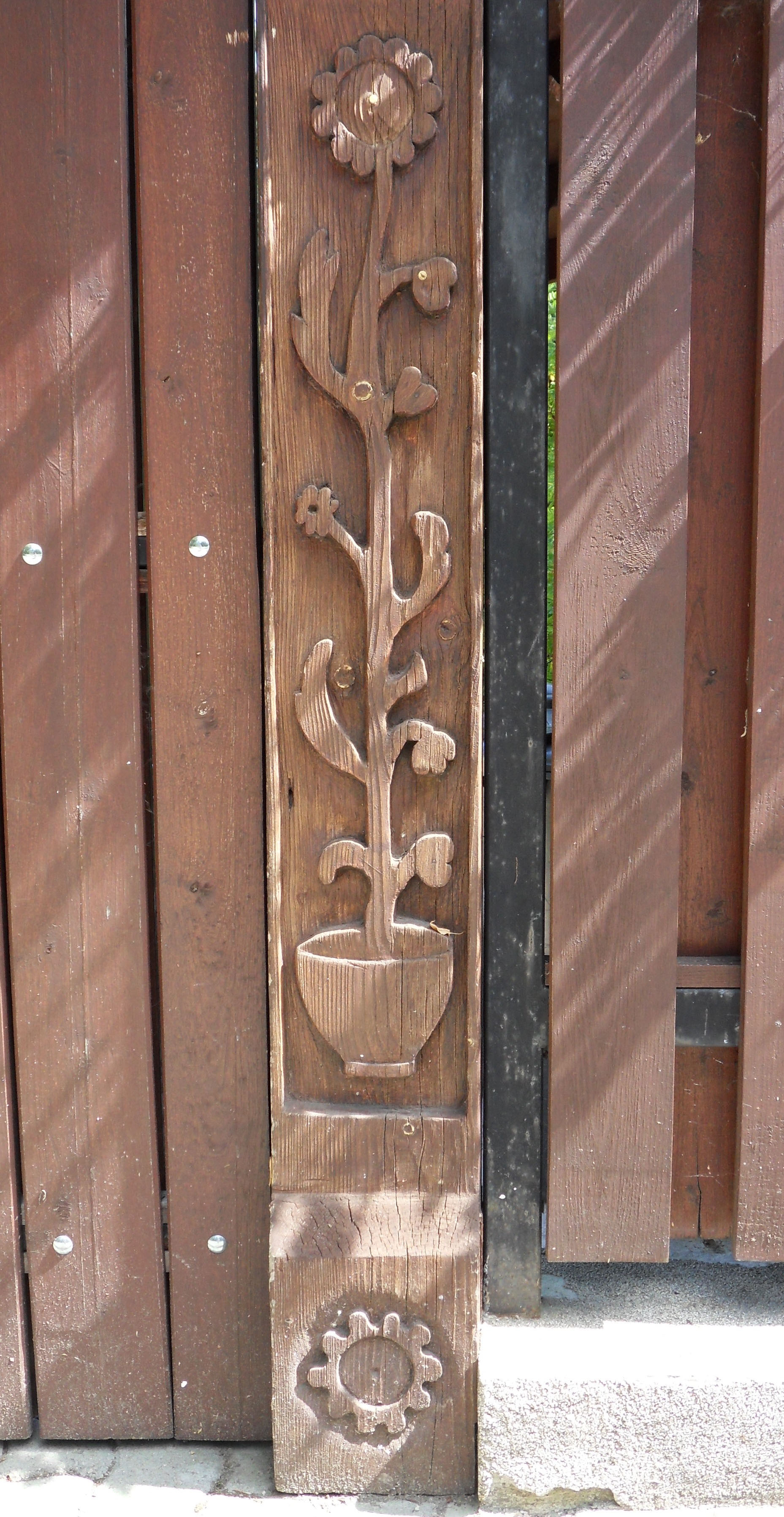
Carvings by István Benedek on the gate (Photo: gergely Flier/pestbuda.hu)
István Benedek wrote about the decorative carvings as follows:
"What kind of flower did I carve? God knows what kind. On the outside of the gate, they grow along bending steams, with soft leaves and heads similar to a sunflower. I only added a few stylised petals to the inside. On the outside, the inscription includes the street name, house number, the year the gate was erected in. On the inside the inscription names the makers of the gate, and includes the ancient blessing: Áldás a bejövőnek – Béke a kimenőnek [blessed be those arriving – peace on those leaving]."
Benedek also details how the weight of the gate surprised them. Ingeniously, they acquired~ help for a nearby construction site, and the structure was up within two hours. The roof and door were added later.
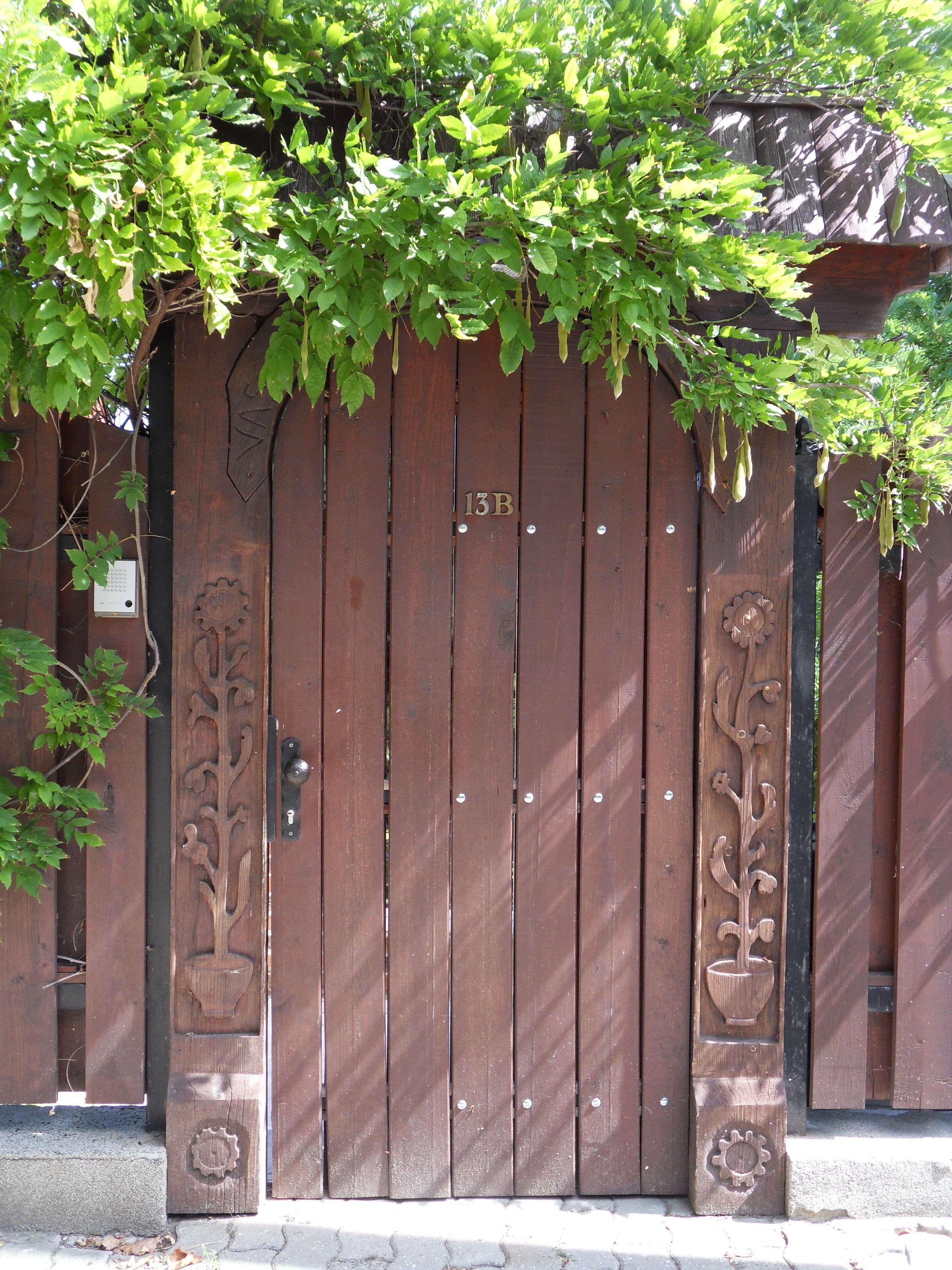
The gate today (Photo: Gergely Flier/pestbuda.hu)
The Székely gate is unique, and as István Benedek wrote: "Is a part of Budapest until destructive hands do not tear it down."
A visit to Vas Gereben Street shows that the gate is in good hands, and though slightly obscured by plants it still stands as a memorial of its creator in this quiet Buda street.
Cover photo: 13/b Vas Gereben Street, 12th District. The house and Székely gate (Photo: Gergely Flier/pestbuda.hu)

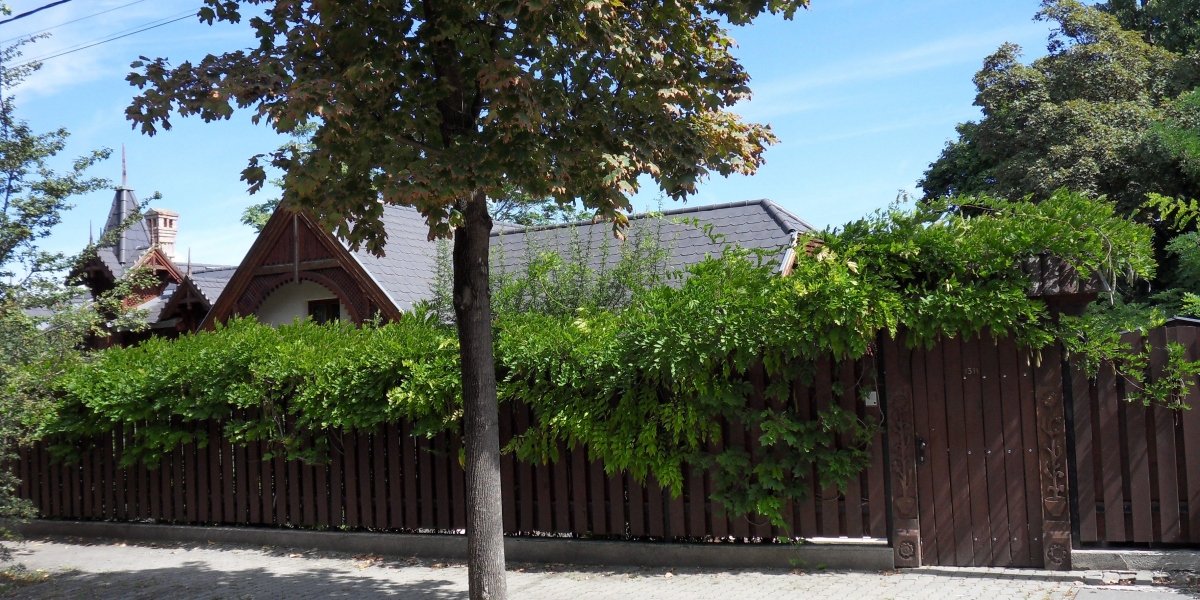

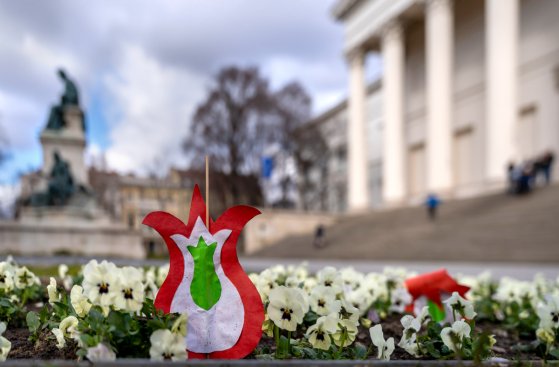

































Hozzászólások
Log in or register to comment!
Login Registration